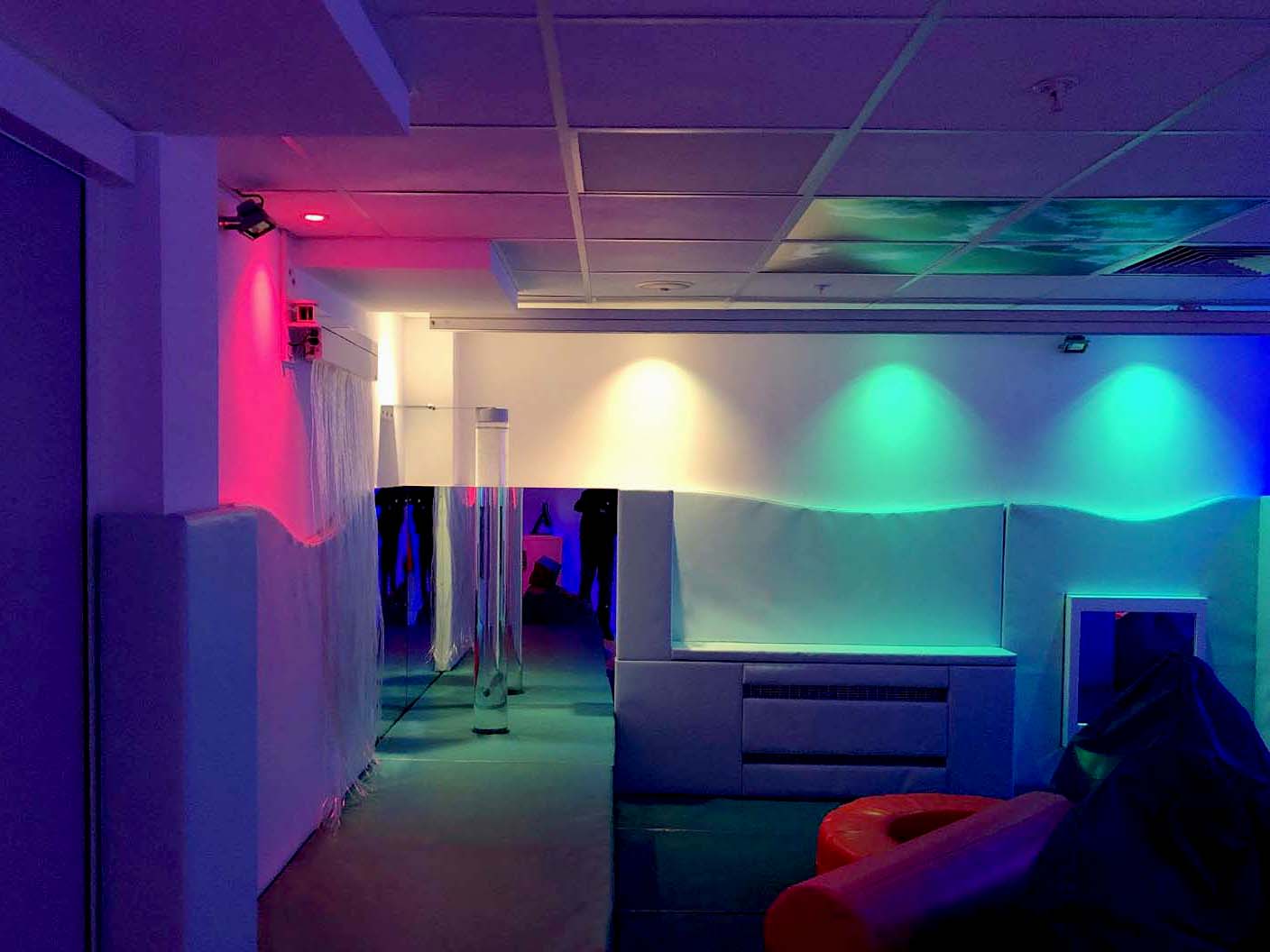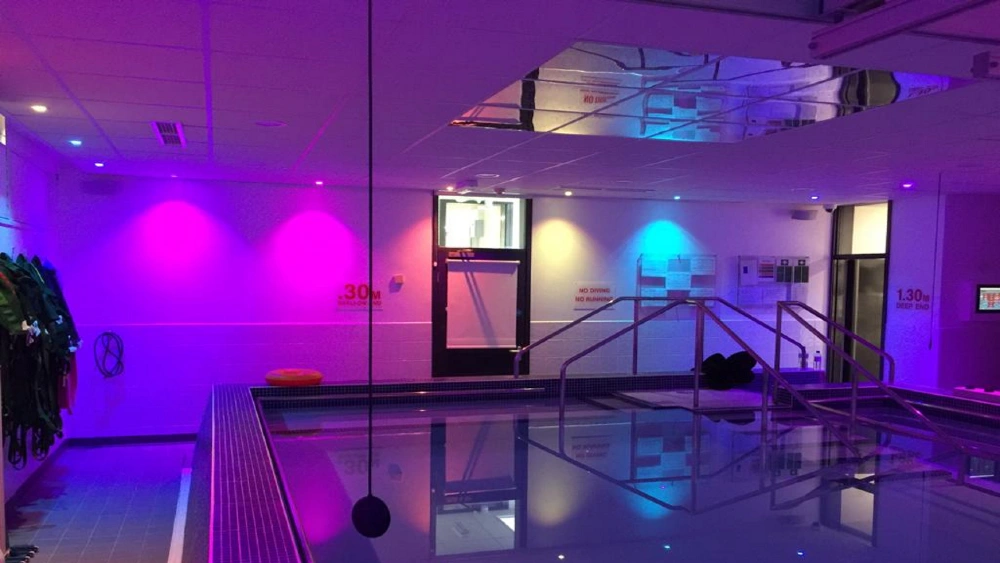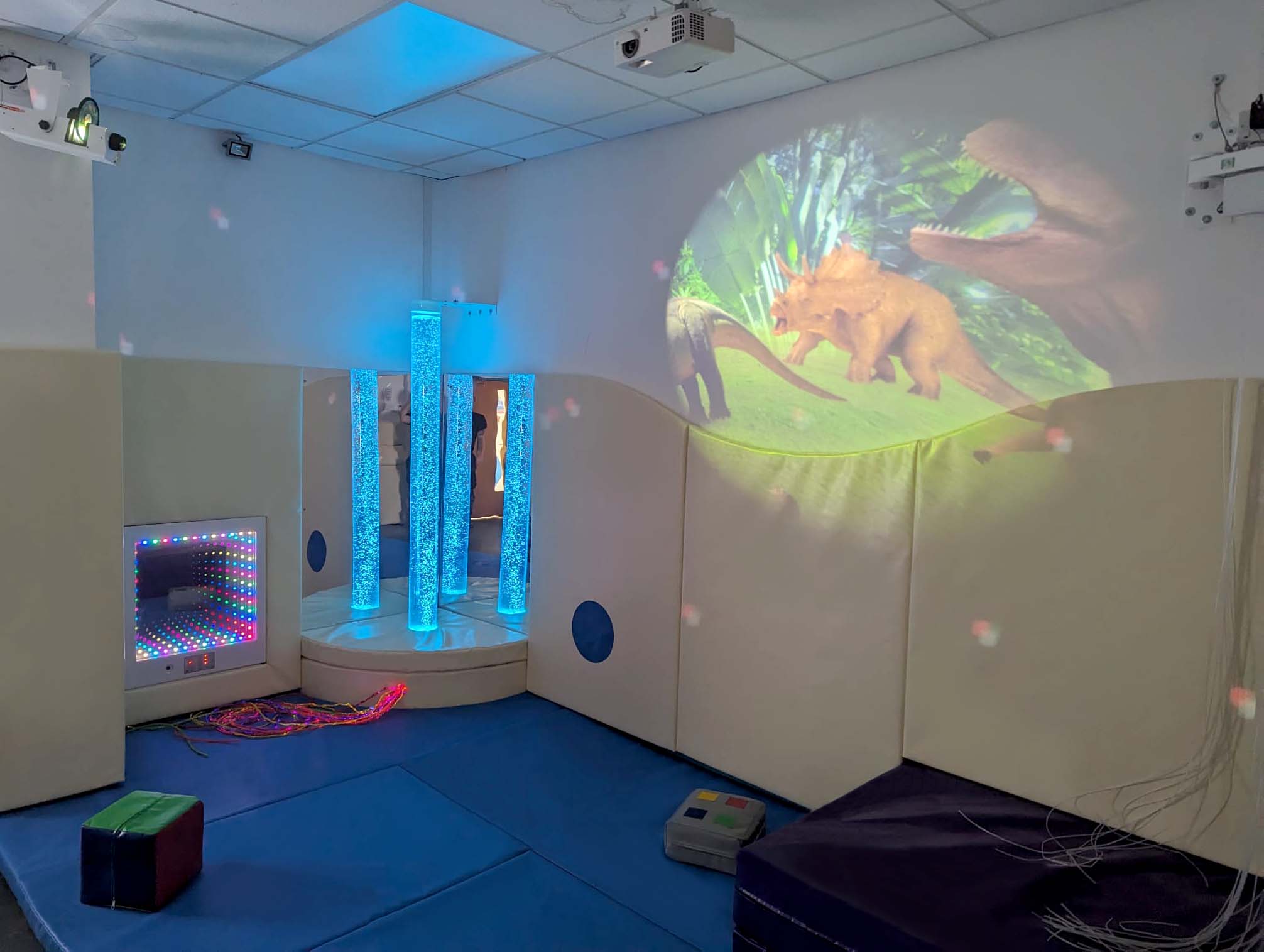Lighting is one of the most important aspects of a sensory room, shaping the overall experience and determining how users interact with the space. The right lighting can create a calming atmosphere, provide visual stimulation, and enhance sensory engagement.
But with so many options available, how do we determine which sensory room lighting is best? Let’s explore the key factors to consider when selecting the ideal lighting setup for a sensory space.
Understanding the Purpose of the Sensory Room
The first step in choosing the best lighting is defining the purpose of the sensory room. Different lighting types serve different functions, so they need to match the room. Here are some examples:
- Multi Sensory Rooms: As multi-sensory rooms cater to a variety of needs, these rooms generally have a combination of adaptable lighting solutions, such as adjustable LED systems that can transition between calming and stimulating settings.
- Calming Sensory Rooms: Within calming sensory rooms, controllable lighting is ideal for reducing anxiety and stress. Lighting within these spaces that can be utilised to adjust elements such as colours, light sequences and amount of light projected.
- Dark Sensory Rooms: Dark Sensory Rooms rely primarily on a combination of high contrast products and UV lighting. The natural lighting of the room is as dark as possible, with dark coloured walls and blackout curtains to amplify the installed sensory lighting effects.
- Immersive Sensory Rooms: These rooms rely more so on the visuals produced from sensory equipment, than the lighting itself. Primarily focusing on surrounding room projections to create a fully immersive scene.
Types of Sensory Room Lighting
When designing a sensory room, we look at several lighting options available, each offering unique benefits that cater to different sensory needs and experiences. When selecting lighting, it’s essential to consider both functionality and engagement.
The lighting within a sensory room can be found in two forms:
Sensory Lighting Equipment
Sensory Lighting Equipment within a Sensory Room, refers to the sources of light throughout the space. This can vary depending on the type of space you require, the atmosphere you are trying to create and the needs of the users accessing the room.
Sensory Lighting Effects
Sensory Lighting Effects refer to the visuals produced from various sensory equipment and light sources. This can vary, resulting in a selection of stimulating and engaging patterns, colours, sequences and imagery.
Sensory Lighting Equipment
Colour Changing Mood Lighting
Mood Lighting consists of various forms of light sources that can be altered to set the mood of your sensory room. Elements such as colours, light strength and light sequences can be adjusted via supervisors of the space using a control panel or by service users via interactive switches.
Forms of colour-changing mood lighting include: downlights, strip lights and flood lights.
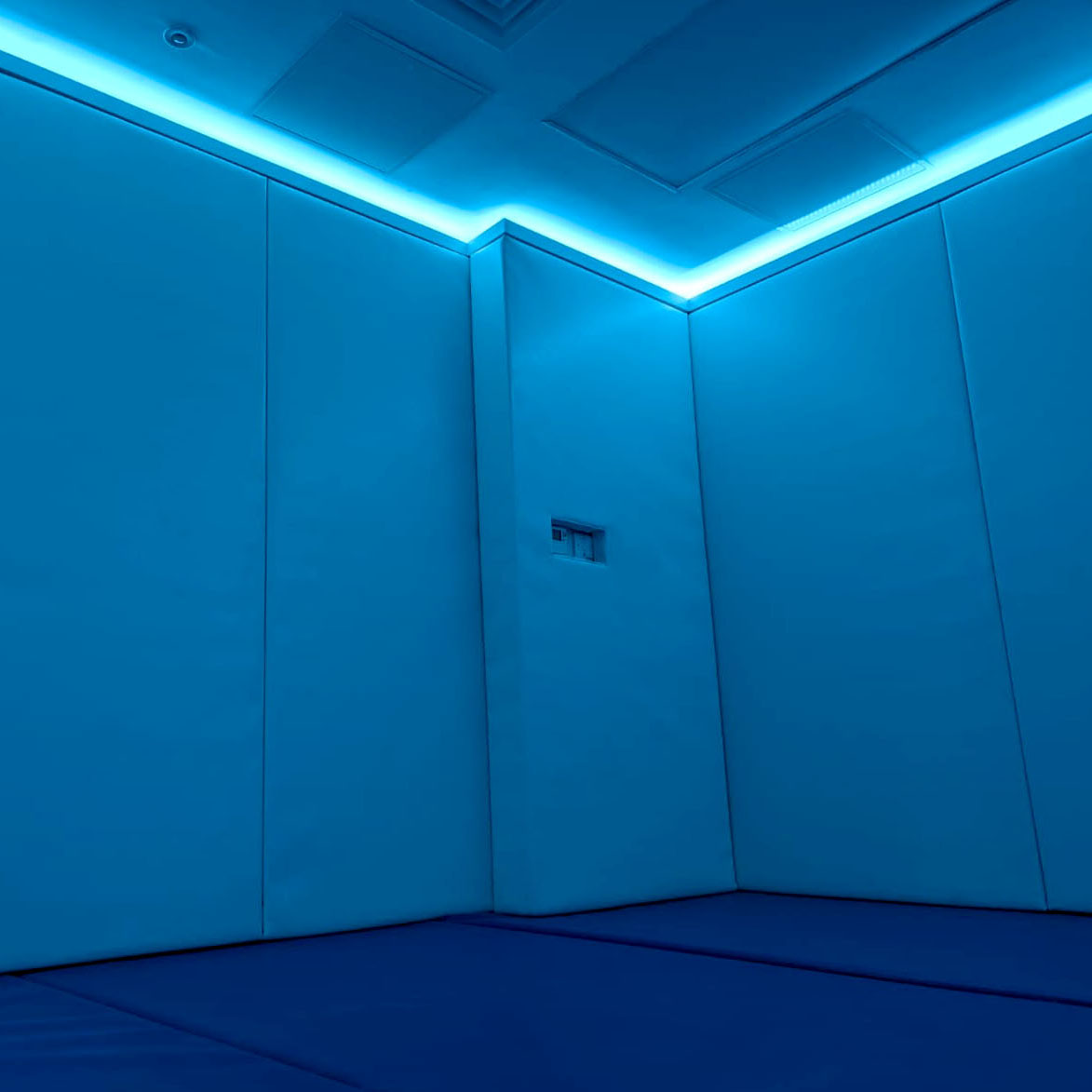
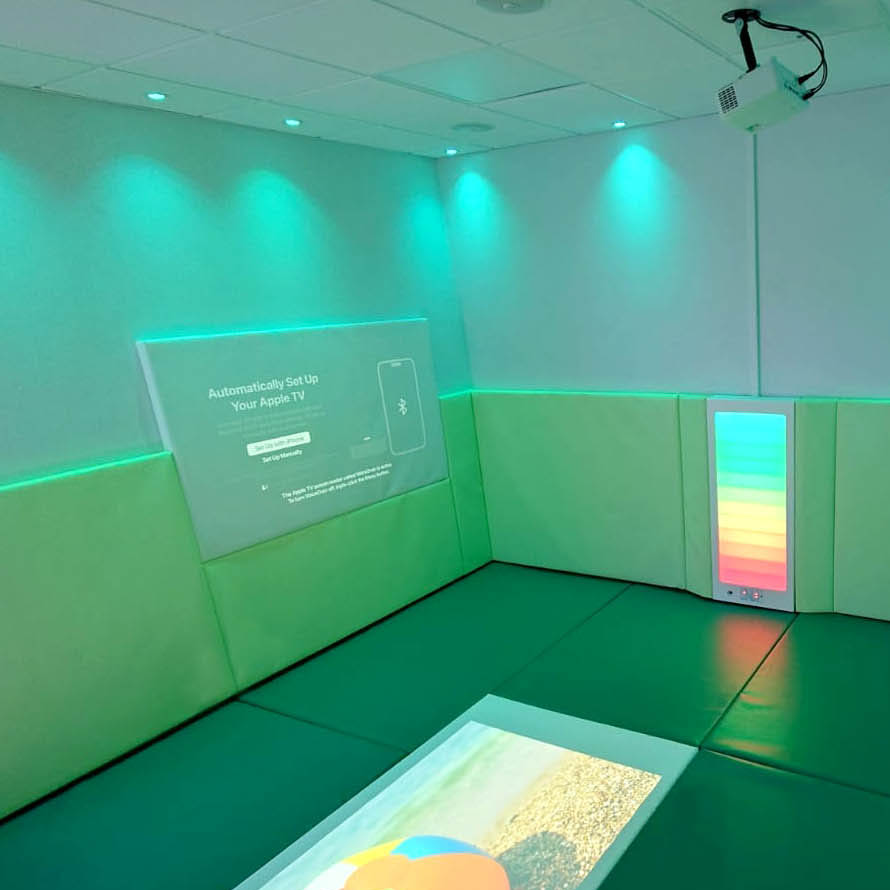
UV Lighting
UV lighting and UV reactive equipment within a sensory room create a vivid, glowing effect. This is amplified in darker settings, such as dark sensory rooms or within multi-sensory rooms when the lighting is on a lower setting.
UV reactive lighting and equipment can be used to provide:
- Visual stimulation for those users with visual impairments
- Sensory integration for users to develop skills such as visual tracking, hand-eye coordination and focus.
- Sensory regulation for users experiencing sensory overload.
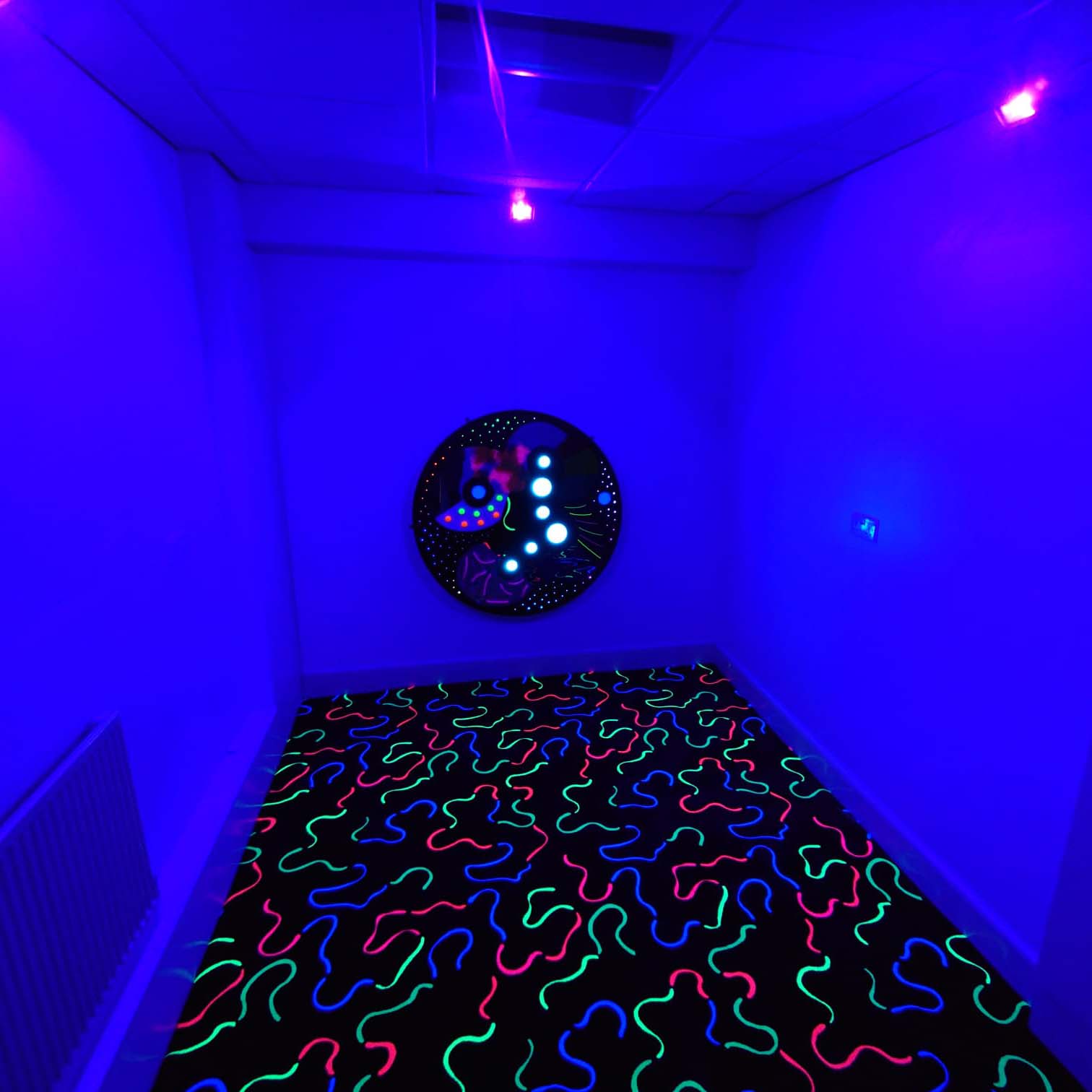
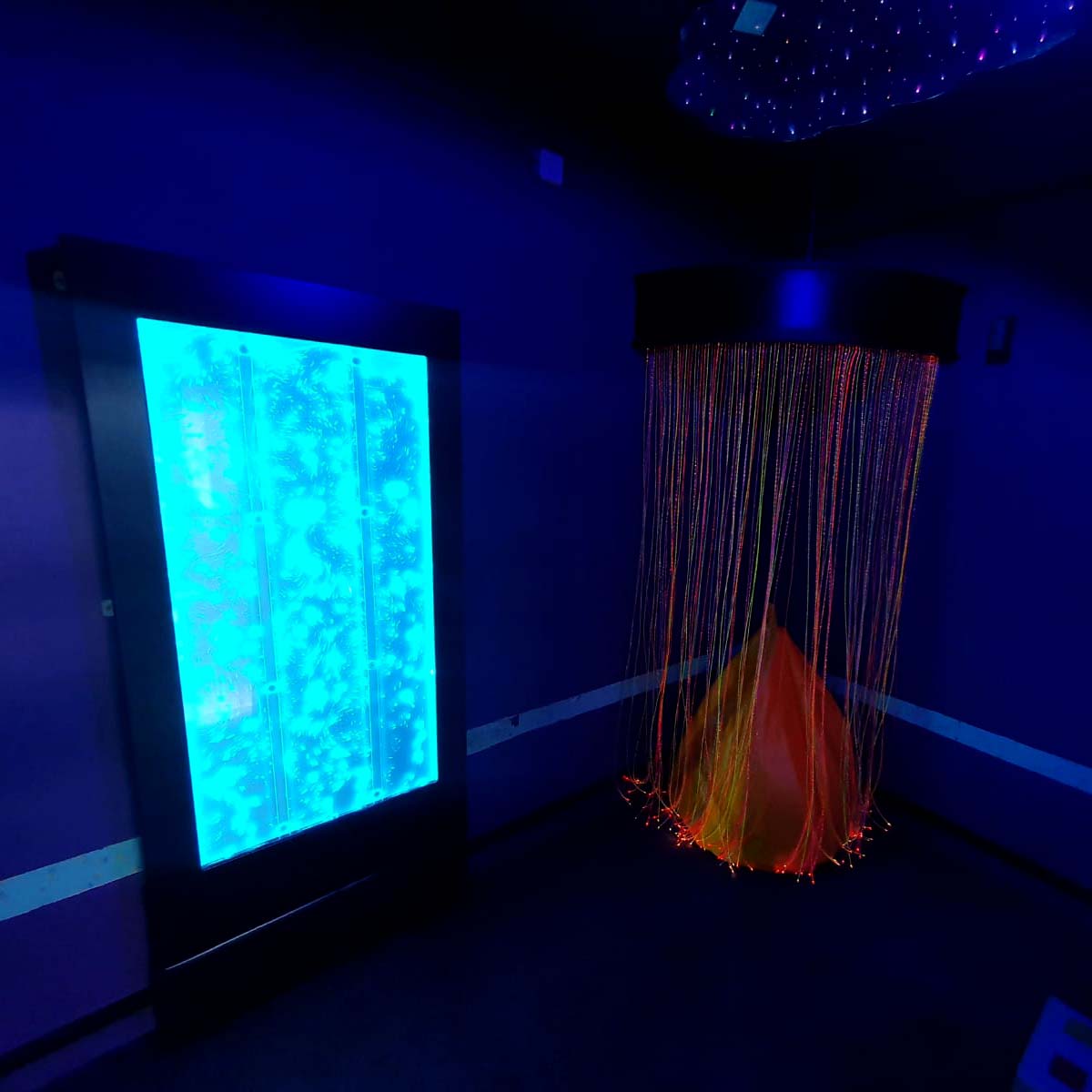
LED lighting
LED lighting allows more flexibility, provides a longer life-span and serves as an eco-friendly alternative. A key benefit of LED lighting and equipment are the highly interactive features such as colour and sequences, that can be adjusted through both control panels and hand switches.
An example of LED lighting equipment is our range of I-Digital Panels – a selection of wall based panels such as Infinity Panel and Tower Light. These display various colours and light sequences in reaction to sounds, making them ideal for engagement and cause-and-effect learning.
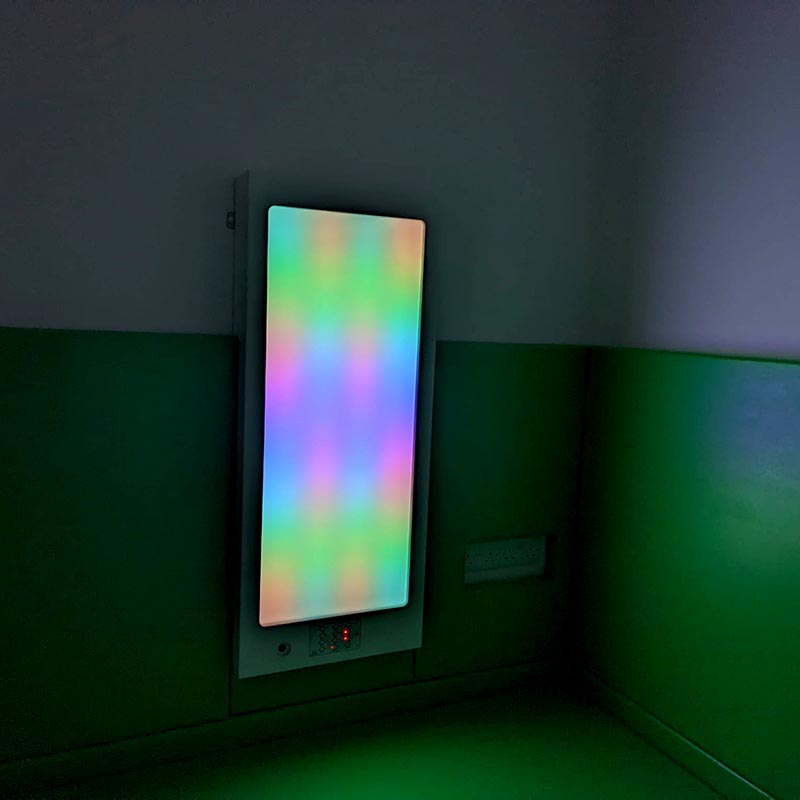
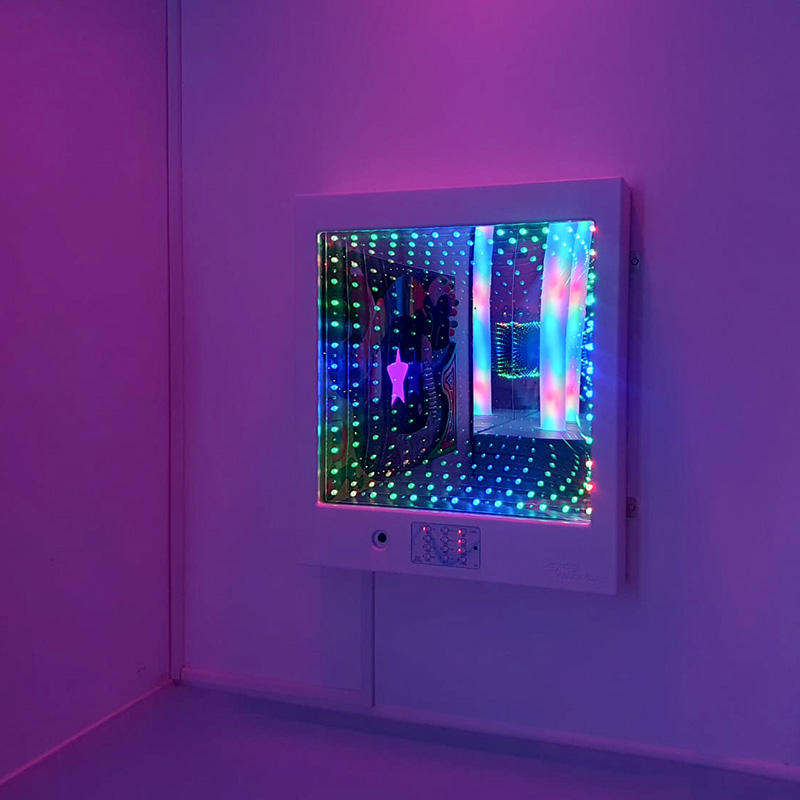
Fibre Optic Lighting
Fibre optic lighting and equipment provide a soothing, twinkling effect that captures users attention without overwhelming the senses.
This form of sensory lighting can also be incorporated into various forms of sensory equipment including tactile resources that allow users to engage through touch, such as fibre optic curtains and strands.
Fibre Optic Lighting can also be used in quiet, calming areas through equipment such as a fibre optic ceiling where users can self-regulate through the visuals of soft, glowing colours.
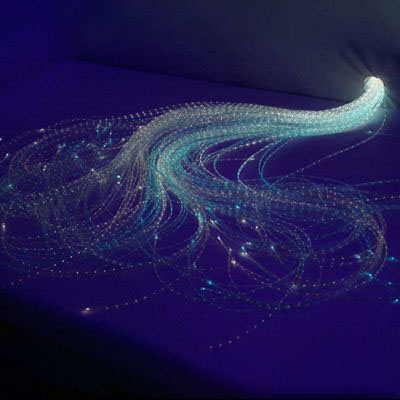
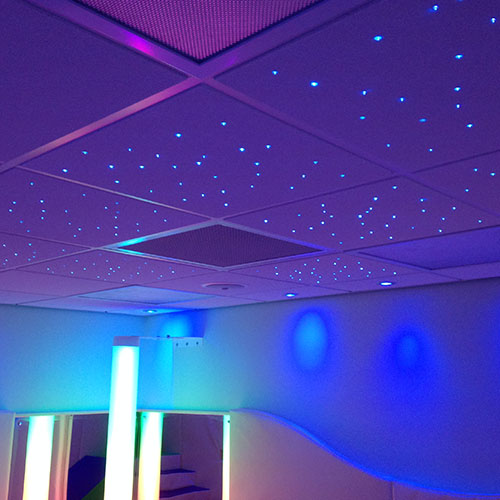
Selecting the right combination of both sensory lighting equipment and sensory lighting effects allows for a well-balanced sensory experience, ensuring that the room meets the specific needs of its users while maintaining an adaptable and safe environment.
Considering the Needs of the Users
Every individual has their own experiences and handles regulation differently, so it’s important to tailor the lighting to suit their specific needs. For example:
- For users across the neurodiverse spectrum (e.g. Autism, ADHD, etc.) who are experiencing overstimulation, colour-changing mood lighting helps promote a sense of calm and relaxation.
- For users with visual impairments high-contrast lighting and UV reactive equipment can make the space more accessible, and aid with carrying out visual assessments.
- For users who require a high level of engagement and focus, forms of LED lighting and equipment provide hands-on engagement through interactive controls and settings.
Safety and Practical Considerations
When installing a sensory room, safety is a key priority for us. When installing sensory lighting and sensory lighting equipment it’s vital to ensure:
- All electrical components are securely fitted and always compliant with safety regulations.
- Wires and fixtures are in containment and out of reach.
- Equipment is durable and designed for frequent use in sensory environments.
Another element to consider is the maintenance of your sensory lighting. Opting for sensory maintenance will ensure that both your lighting and equipment remain safe, secure and in working order.
The best lighting for a sensory room comes down to both preference and the needs of the users. Whether you’re looking to create a calming space, a stimulating interactive zone, or a flexible multisensory environment, choosing the right lighting solutions will enhance the experience and effectiveness of any sensory room!
For expert advice on sensory room lighting or professional installations, contact us today to explore a solution that fits your space and needs.

